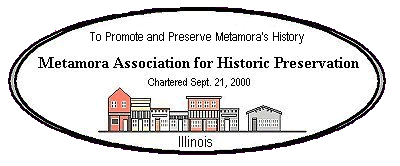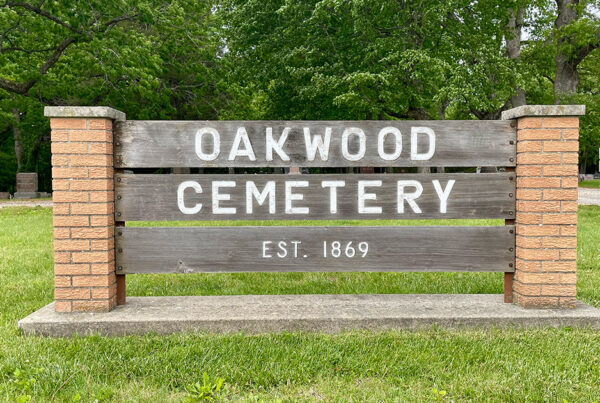by Julie Engel Schertz

In his book, CHRISTIAN ENGEL AND HIS FAMILY, Val Swartzendruber describes the picture shown here of the log barn that once stood ½ mile west of Metamora on the Engel homestead. The barn was built by John Engel (1801-1888), and his half brother Peter Engel (1794-1875). They arrived from the Alsace/Lorraine area of France in 1830 and 1831, and were followed by other family members in 1833, including their father Christian Engel (ca. 1765-1838), who was an Amish-Mennonite Bishop.
Shortly after their arrival, they acquired the farm that is still known as the Engel farm. Eight generations descended from Christian Engel have lived on the farm. The farm has been part of the family for more than 170 years.
The drawing of the log barn was made about 1891 by artist and engraver Jacob Faber, who created the art work for the OLD GRAND DAD WHISKEY label and advertisement that appeared on the bottle and in magazines for many years. Jacob Faber married Amelia Engel, the daughter of Peter R. Engel (1822-1888). The Peter R. Engel house still stands today on the site where it was built. A school house was located on the Engel farm just west of Peter R. Engel’s house. Amelia Engel taught school here in the 1880’s.
The son of Jacob Faber was Art Faber, and he told the following story to Jess A. Leman, who wrote the following in August 1978. In the back of the log barn was a thick wooden area, where there still lived very primitively a family of Indians. These Indians would occasionally appear, wanting to use and marvel at the white man’s modern tools. They often made use of the grindstone to sharpen their crude hunting knives, tomahawks, etc.
Upon closer examination of Faber’s rendition of the log barn one can see most everything was hand made. Note the hewn out log for a chicken trough, the wooden pegs on the side of the barn for harness hooks, and the rickety old cart without wheels. When Leman commented about the strange cart without wheels, Fabel replied “wheels were expensive and rare in those days, and the carts were made interchangeable. No doubt someone had borrowed the wheels when the log barn picture was drawn.”
This same log barn was sometimes pressed into service and used for services of religious worship. On Sunday, July 1, 1866, Henry Geistlich is quoted “today there was church here by Brother Peter Engel. A barn was our place for assembling, there being a large number of people assembled. In the forenoon there were 53 horse drawn rigs in the yard, and in the afternoon still more.”
Planks were laid across logs to serve as benches. Chickens would wander in, but if they became noisy someone would quietly shoo them out. C. Henry Smith (1875-1948) in his book MENNONITE COUNTRY BOY, recalls as a small boy driving west of Metamora in a horse drawn conveyance, looking to the south and seeing the Engel log barn.



